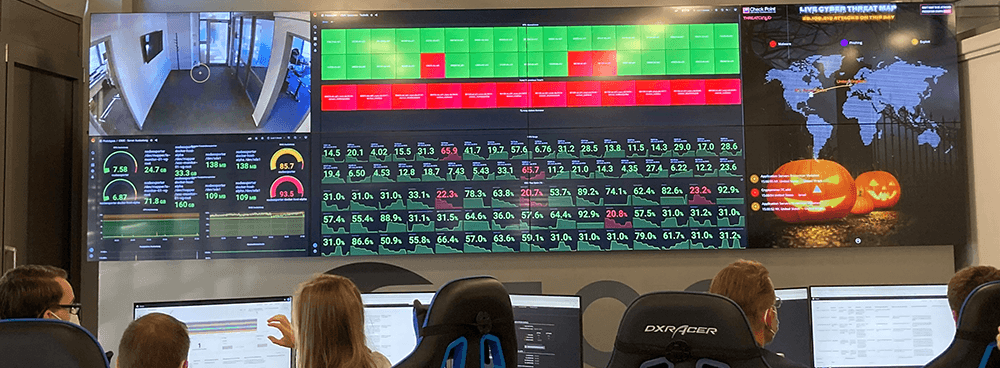Solution: IT Service Management Certification | ISO 20000
Solution: IT Service Management Certification | ISO 20000
ISO 20000 certification process
TÜV AUSTRIA IT Service Management certification according to ISO 20000
Information
IT service management (ITSM) in companies and organizations must meet numerous requirements: On the one hand, it must be reliable and effective, but on the other, it must also be cost-efficient. ISO 20000 is the only international standard according to which IT service management can be certified and is divided into two parts:
- ISO 20000-1: Defines requirements for the introduction of an IT service management system
- ISO/IEC 20000-2: includes best practices
The standard is based on process descriptions such as those defined by the IT Infrastructure Library (ITIL) and supplements these. In contrast to ITIL certification, which is valid for individuals, ISO 20000 enables the certification of entire organizations.
The target group primarily includes companies and organizations that provide IT services as IT providers or as part of their service management and wish to demonstrate their ability to deliver high-quality IT services to internal or external customers.
A documented IT service management system that is integrated or practised in the organization in accordance with the specifications of ISO 20000 (this includes a process model comprising 14 mandatory processes) is a prerequisite for certification. Prior to this, an IT service management policy tailored to the company/organization and a separate IT service catalog must be defined.
The certificate is valid for three years and may be used for advertising purposes in accordance with the certification regulations. The certification logo can be used, for example, on stationery and the website (in each case in connection with the organization). The planned use must be approved or confirmed by the certification body for legal reasons.
Advantages
- ISO 20000 certification is a measurable quality standard that contributes to a significant increase in the efficiency and quality of IT services
- You assure internal and external stakeholders that your company or organization provides IT services of satisfactory quality, as the efficiency of IT services is difficult to understand, especially for external third parties.
- The standard ensures that your IT process and IT services are clearly defined and that continuous improvement is possible.
- Certification offers a competitive advantage over competitors on the market thanks to better service quality.
- The introduction of formal framework conditions in the area of service and process improvements generates clearly recognizable cost and time savings.
- You actively minimize the risk of recurring errors and incidents through ISO 20000 certification.
ISO 20000 certification process
A certification process usually takes between three and five weeks. We determine the exact effort, duration and costs together with you prior to the certification process.
1. Information meeting
During a non-binding and free consultation, we will inform you about the procedure for obtaining your certificate. The following points will also be clarified:
- Basic requirements for certification
- Objectives and benefits of certification
- Comparison of company data and definition of the scope of certification
- Discussion of your specific requirements and wishes
- Determination of the next necessary steps towards certification
On the basis of this information meeting, you will receive an individual offer tailored to your organization.
2. Commissioning
If you are satisfied with the offer, the certification body will be commissioned. After you have received an order confirmation, the certification process begins with a joint appointment with the responsible auditor.
3. Pre-audit (optional)
A pre-audit can be carried out on request. Based on a jointly defined framework, either specific areas or processes or the overall situation of your organization are audited. Any weaknesses in the documentation and implementation of the system are identified. On request, a pre-audit can provide you with a status report regarding the basic certifiability, detailed expertise on individual processes or conformity with individual requirements of the respective standard. The audit methodology corresponds to that of the certification audit.
4. Level 1 certification audit
The stage 1 audit serves to determine your eligibility for certification. Site-specific conditions are assessed and necessary information regarding the scope of application is collected. The following main points are primarily dealt with in the stage 1 audit:
- Checking the documentation for conformity and completeness in comparison with the respective standard requirements.
- Status of the implementation of the management system in the company: Does the existing management as well as the degree of implementation of the management system in the organization basically allow for certification or are crucial details still missing?
Before audit stage 2 is carried out, an audit plan for the actual certification audit is drawn up and agreed with you based on the knowledge gained about your organization and the management system.
5. Certification audit stage 2
As part of stage 2, the effectiveness of the management system introduced in your company is reviewed. Random samples are taken in departments or organizational units and along the process chains for all requirements.
The audit is based on the following:
- Audit planning
- the respective certification standard or individual standard requirements specified therein
- organization-specific documents
- general and industry-specific principles (laws, further, industry-specific, required standards, etc.)
After evaluation and assessment of the results, you will be informed of the audit result and any deficiencies or deviations during the final meeting. Corrective measures are defined in the event of deviations.
6. TÜV AUSTRIA certificate
The actual certification is issued by the TÜV AUSTRIA certification body after successful auditing and reporting on the basis of the audit report. The certificate is issued if the following certification requirements are met:
- Documentation and implementation of the management system
- Certification agreement (confirmation of the certification offer, the certification regulations and the general terms and conditions)
- positive completion of the audit and thus a corresponding recommendation from your audit team to the certification body
A certificate is issued for a period of three years. In order to maintain the validity of the certificate over the entire term, it is necessary to carry out an annual surveillance audit (12 months and 24 months after the certificate has been issued) or to complete a positive audit.
7. Surveillance audits
During the annual surveillance audit, the effectiveness and further development of the management system are randomly checked. Surveillance audits are shorter in terms of audit scope and cover topics specified by accreditation bodies, focal points specified in the audit plan and address the deficiencies of the last audit.
8. Re-certification audit
This must be carried out before the certificate expires (usually after three years). In a re-certification audit (often also referred to as a repeat audit), all requirements are randomly checked in the same way as in a certification audit. The work involved in this repeat certification procedure is shorter than in an initial certification procedure (approx. 2/3 of the audit time of an initial certification procedure).
After a positive certification decision, a new certificate with a validity of three years is issued.














